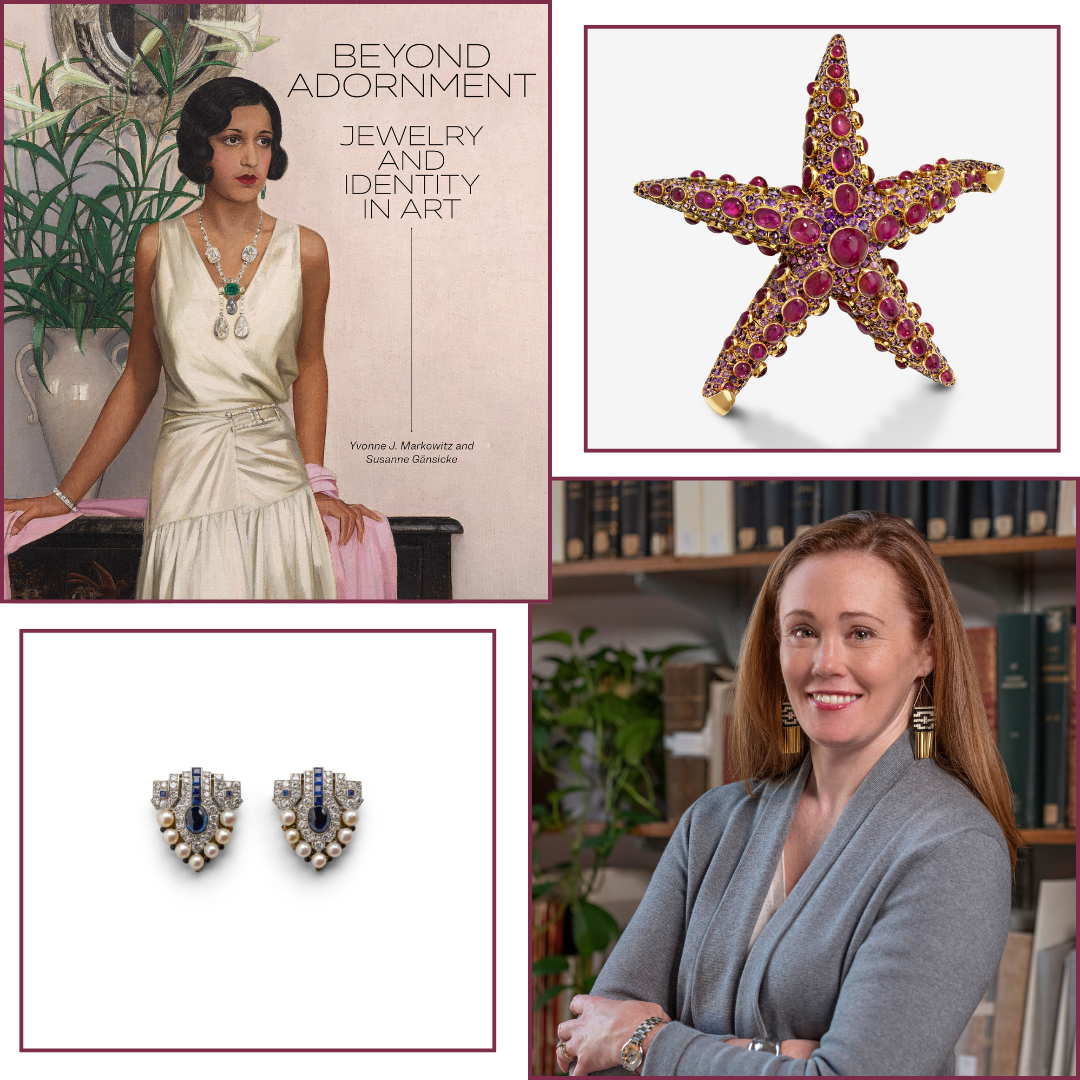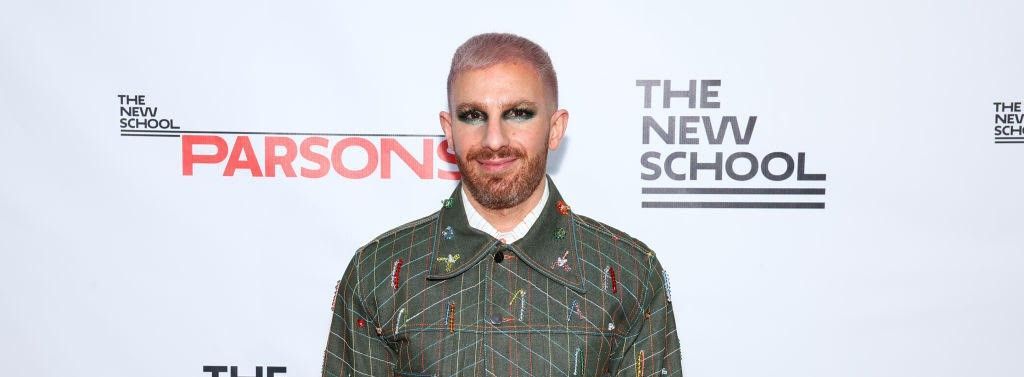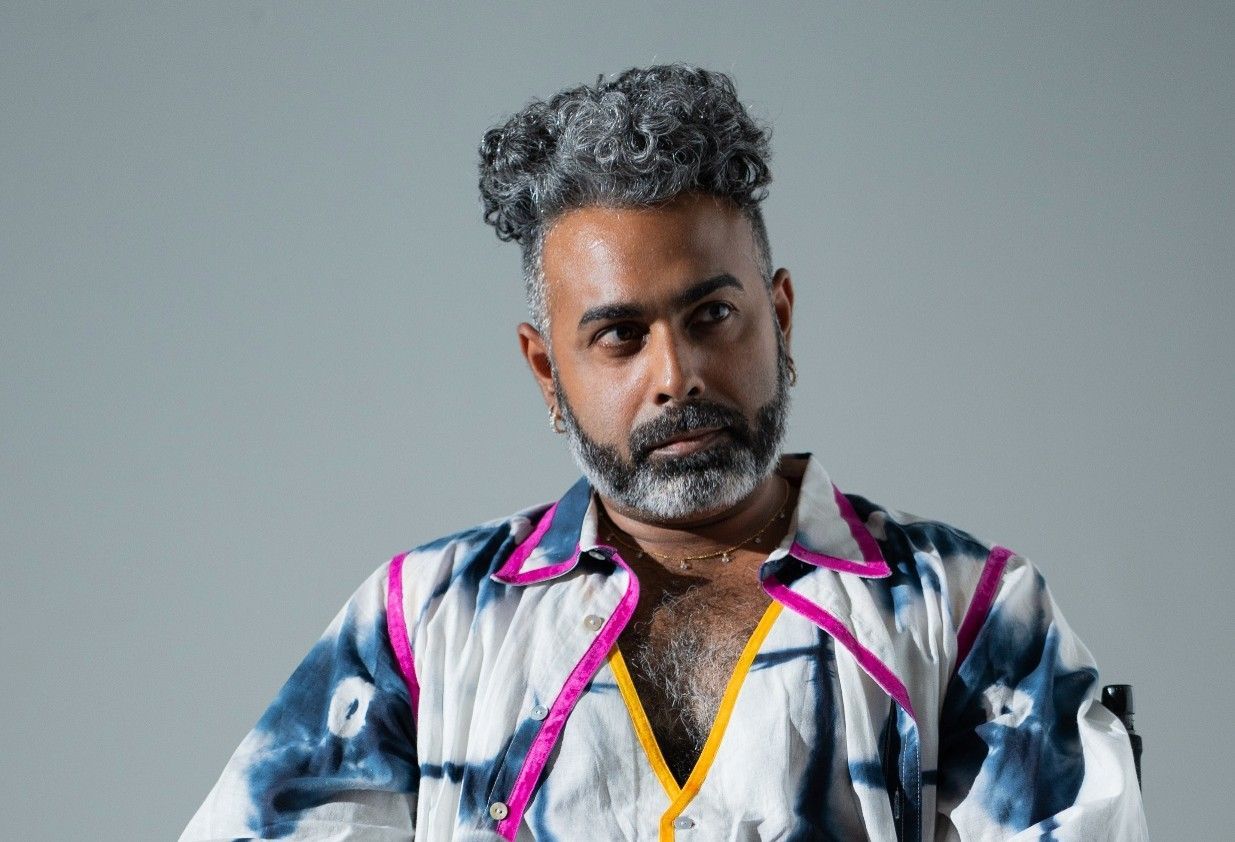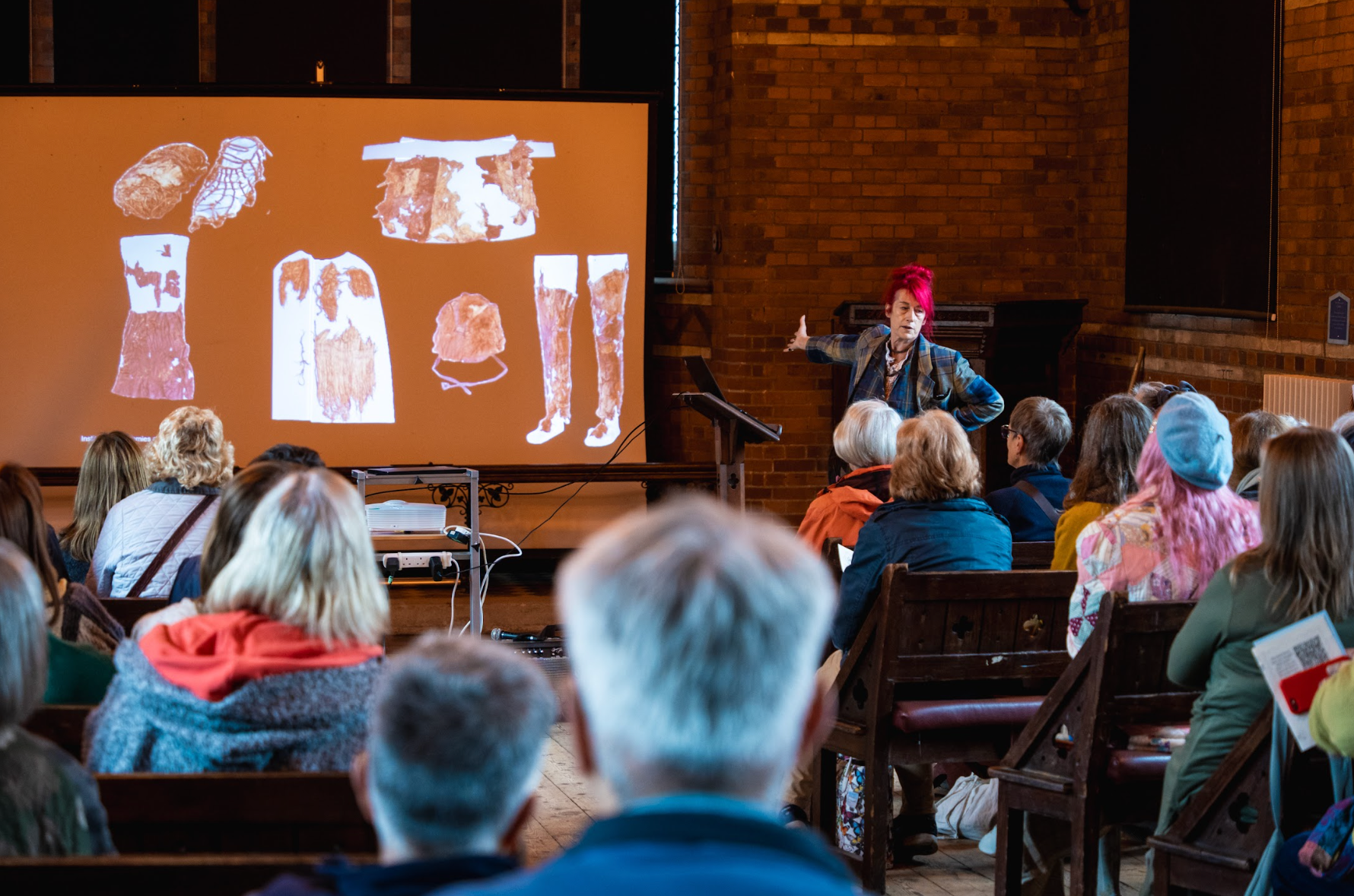Dialogues on Dress: Emily Stoehrer
This edition of Dialogues on Dress features Emily Stoehrer of MFA Boston. Sartorial story detective and pillar in the dress community, Stoehrer occupies the sole Senior Curator of Jewelry position at US fine arts museums.
The history of dress and the future of fashion act in dialogue, always interfacing to inform our present moment. The Costume Society of America’s diverse members exemplify this reality like no other; through the constant connections across time and disciplines they draw, our membership of costume curators, designers, artists, and so much more embody fashion’s ubiquitous presence - and dress’ daily power to teach us all something new.
We hope you will join us for CSA’s new Dialogues on Dress series, interviews now available monthly in our e-News and here on our website.
Interested in getting in touch? Email enews@costumesocietyamerica.com

Dialogues on Dress: Emily Stoehrer
Jewelry occupies a singular position in the collective fashion conscious. Consider the locket enclosing a loved one’s photo or engraving, the pair of earrings passed down through generations, stones living new lives across decades and settings. A wedding ring may be the sole item in your ensemble worn each and every day. And yet, jewelry for many often operates as a finishing touch, an addendum - but its tiny intricacies have the very large potential to cohere or dismantle an entire style. Jewelry is at once only an “extra” to some, and a totem of familial legacy, or love, or essential ornamentation to nearly all. So perhaps it is simultaneously not and entirely surprising there is just one position in the whole of US fine arts museums with the title of Senior Curator of Jewelry. That position is held by CSA Member Emily Stoehrer at the Museum of Fine Arts, Boston. An arbiter of taste, detective of sartorial stories, and pillar in the dress community, Emily’s singular position is reflective of her own sui generis identity. Her knowledge and passion for jewelry breathe life into the histories she shares, reminding us that these “objects are never static, they are living things,” always evolving if you are only curious enough to look.
Read our conversation below. This interview has been edited and condensed for clarity.
___________________________________________________
Please paint a brief sketch of your background, personal & professional. Do you have a specific memory around jewelry that feels foundational to where you are today?
I thought I was going to go to law school. Around 2004, I completely pivoted and applied to FIT’s Fashion & Textile Studies program. I had no background whatsoever in the industry, but I was immediately so enchanted by fashion history and the opportunities for endless research. In the middle of the graduate program, I ended up at an internship with the Museum of Fine Arts in Boston, where I am originally from. I worked my way to Curator of Jewelry - the only Fine Arts museum in the US to have this position - in 2014, which was also not something I had imagined! The first Curator of Jewelry at the museum [appointed in 2006] approached me about working with her, and I suddenly realized how little of my fashion research and experience had to do with jewelry. But she promised me she was a good teacher, so we embarked on a wonderful partnership that really continues to today.
Did something in particular inspire the pivot to fashion? How did your experience at FIT guide your trajectory?
My undergrad degree was in psychology. It might seem really far from what I do now, but I’ve always been interested in the people behind fashion, so [psychology] really underpins what I do even now. FIT was an incredible, door-opening opportunity for me. I had never even taken an Art History course beforehand. I quickly learned I was part of this larger network across the fashion industry, which helped me go back to Boston even going to school in New York. The subject - all the stories, history, and more in scholarship - came to life for me in graduate school. I saw how limitless this area of study really is.
I would love to hear how you would characterize your personal relationship to dress over the years.
I’ve always thought about fashion as being aspirational - you dress for the part that you want. How do I want to be seen, how do I see myself? I just did a show this past spring with my colleague called Dress Up, which dealt with the idea that we dress up every day for whatever role we’re playing. My PhD focused on the history of material culture and of identity, so that’s what I’ve looked at from a scholarly perspective, but it’s also very much a personal approach to look at fashion as part of my identity.
In terms of jewelry, and beyond the personal, [jewelry] is essential to creating the look of any given period - it comes together with the clothing to create style and is an integral part of fashion’s storytelling. It’s really understudied, and I hope it becomes a larger part of the conversation in the years to come.
Can you tell me about your PhD program?
I got my PhD in Humanities from Salve Regina University in Newport, Rhode Island. When I started with Yvonne [the Curator of Jewelry at the time], I was only on a two-year contract; I hoped for an extension, but instead she told me to go get a PhD. It was surprising, (I didn’t think I needed to go back to school), but she was absolutely right. A friend of mine started this program in Humanities at Salve Regina, and the director at the time had come from RISD’s history department and was really open to fashion. I took 10 classes in my PhD that ran the gamut from literature to ethics to religion. Each time, I was confronted with fashion from all these different perspectives, which was really challenging but also exciting. I was also given a lot of freedom with my dissertation; I studied the Hollywood red carpet of the 1990s and 2000s, looking at the way jewelry was positioned during those years. I worked with Neil Lane, a Hollywood jeweler to the stars, and that thread still continues today; I’m currently working on a book and exhibition on his collection. The accompanying book and exhibition, Radiance and Reverie, will open at the Toledo Museum of Art [and release] this fall. It explores jewelry made from the mid-19th and mid-20th century - pieces from international exhibitions, a huge collection from Tiffany & Co, and an amazing collection of early 20th century jewelry, some of which has Hollywood provenance.
In the exhibitions you’ve curated or worked on at the Museum of Fine Arts, Boston, which has been the most memorable and why?
The last couple of years have been so busy. Beyond Brilliance opened last May, which was a renovation of our jewelry gallery that showcased 160 of the MFA’s pieces. I think that’s probably what I’m most proud of. It brought together a huge group of people and so many pieces, and I love the way it connects across generations, offering something for everybody. It’s been great to hear people unexpectedly find surprise and delight in it. Jewelry is so embedded with stories for most people - it makes you think about something you were given or that a family member wore - and my hope is that the gallery brings those stories to life for people. I’m currently working on a book [Brilliance: Jewelry, Art, Fashion coming out in October] related to that, thinking about jewelry as a decorative art and as a messaging device. My favorite piece from Beyond Brilliance is this starfish brooch from 1937, from the first woman to run a jewelry house in France [pictured above.] Everything is hinged, so it has this incredible movement, and in 1938 it was bought by the actress Claudette Colbert. It shows how many different angles you can approach an object from, be it the technical, the artistry, the provenance, and so on. And it shows the best of 1930s design!
Does your job require knowledge of the technical aspects of jewelry-making? Seems daunting…
Definitely, and it’s also my weakness. The technical piece alludes me the most, but we have an amazing team of conservators at the MFA and colleagues across the field I can bring in. I’m always learning in this.
Describe a typical day of work (& perhaps some leisure) - or if no day looks the same, describe a good one!
There’s definitely no "usual" day. Lots of meetings, lots of travel, and the rare day diving into a book or research. I love a day spent deep in the exhibition process, especially when we are at the stage of doing mock-ups, where we pull out all the jewelry into our textile study room. The team is all there together, arranging and mulling over how best to present it. You get this moment where it all clicks.
In terms of travel, I’m getting ready to go to the Netherlands for The European Fine Art Fair. I’m on the vetting committee for the show, which gathers 200 experts to look at every object for sale. It feels like a crash course in close-looking. I’m also planning a trip to London to speak at a conference in June, and trips to Paris and India for other projects soon.
As you're an educator as well as an artist, can you give me your top tip for inspiring creativity?
Curiosity is how we stay motivated. The history of an object isn’t static, they are living things with layers of meaning. The stories are far from cut and dry, even objects that come to us with a lot of information readily available. I’m constantly learning new things and piecing together stories. You have to stay open to this reality, that there is always more to learn.
Over the next five years, how do you see your work evolving? Tell me about a dream project, a vision, or otherwise.
2024 was the year of exhibitions, and this one is the year of books. I have four different projects I’m working on coming out in 2025. I’ve been encouraged to think more about a long-time dream project, looking at jewelry from the 1930s. Jewelry from the 20s and art deco period has been studied quite a bit, but the 1930s on its own, less so. This is true for fashion too; there has been one fashion exhibition I can think of dedicated to the 30s, but no jewelry exhibitions whatsoever. It is such a complicated decade, and I would love to delve into that messiness. It was a time of great economic and political unrest, and yet resulted in some of the most extraordinary jewelry ever made. So why was that? I’m hoping to open an exhibition with the anniversary of the 1929 stock market crash.
What does the future of fashion look like to you?
There is no one path, just like there never has been, but I hope it continues to be a very vibrant space filled with this vast diversity of styles, concepts, and areas to explore.
___________________________________________________
Thank you so much to Emily Stoehrer for having this conversation with me. Check out her appearance in an episode of CSA’s Conversations on Dress series here, discover more of her work here, see the ongoing exhibition Beyond Brilliance at the Museum of Fine Arts, Boston, and keep an eye out for all of her forthcoming publications!
~Madison Brito Taylor
*Photos clockwise:
Beyond Identity: Jewelry and Identity in Art, photo courtesy of Getty Publications. Emily wrote the conclusion titled, “The Theatre of Everyday Life: Dressing the Part”
Starfish brooch, 1937, Juliette Moutard (French), 18‑karat gold, ruby, amethyst, Museum purchase with funds donated by the Rita J. and Stanley H. Kaplan Family Foundation, Monica S. Sadler, Otis Norcross Fund, Helen and Alice Colburn Fund, the Curators Circle: Fashion Council, Nancy Adams and Scott Schoen, Seth K. Sweetser Fund, Theresa Baybutt, Emi M. and William G. Winterer, and Deborah Glasser, Photograph © Museum of Fine Arts, Boston
Emily Stoehrer, photo courtesy of Museum of Fine Arts, Boston
Double-clip brooch, 1930s, Charlton & Co. (American, established 1909), Platinum, sapphire, pearl, Collection of Neil Lane, Photo © Lendon Flanagan



